How Microclimates Affect Plant Placement Decisions

Microclimates are small, localized areas where environmental conditions - like temperature, sunlight, and wind - differ from the surrounding region. Understanding these variations is key to placing plants where they’ll thrive. For example:
- Sunlight: South-facing walls and patios create warmer zones, great for heat-loving plants. Shady areas stay cooler and retain moisture, ideal for shade-tolerant plants.
- Soil Temperature: Warm spots extend growing seasons for crops like tomatoes, while cooler zones suit lettuce or spinach.
- Wind: Exposed areas dry out faster, requiring drought-tolerant plants, while sheltered spots retain moisture better.
Mapping your garden’s microclimates helps match plants to their optimal conditions. Tools like AIGardenPlanner simplify this by analyzing factors like sun exposure and moisture levels, offering tailored plant recommendations. Proper plant placement reduces maintenance, improves growth, and ensures a thriving garden.
Understanding Microclimates In Your Garden

Key Microclimate Factors That Affect Plant Growth
Understanding the environmental variables that shape microclimates is key to strategically placing plants in your garden. These factors combine to create unique growing conditions that can vary significantly even within a small area. Here’s a closer look at the main elements influencing your garden’s microclimates:
Soil Temperature and Plant Growth
Soil temperature plays a crucial role in how plants establish roots, absorb nutrients, and grow throughout the season. Variations in soil temperature are influenced by factors like sun exposure, surface materials, and elevation.
For instance, south-facing walls and hard surfaces like patios or driveways absorb and radiate heat, warming nearby soil. This can extend the growing season for warm-season crops, allowing earlier planting in spring and later harvesting in fall. On the flip side, areas under trees, in low-lying spots, or on north-facing slopes tend to warm up more slowly.
To gauge soil temperature, measure it at a depth of 2–4 inches in both the morning and late afternoon over several days to find an average. While specific temperature needs vary by plant type, cool-season plants thrive in cooler soils, while warm-season plants require consistently higher soil temperatures. Use this information to match heat-loving plants with warmer soil zones in your garden.
Light Exposure and Shade Patterns
Light exposure in your garden shifts due to structures, trees, and the sun’s path across the sky. These changes create microclimates that determine which plants will thrive in specific areas.
Sunlit areas heat up faster and lose moisture more quickly, making them ideal for sun-loving plants. On the other hand, spaces with partial or filtered light offer more moderate temperatures, which suit plants that prefer less intense sunlight.
To understand your garden’s light patterns, observe sunlight exposure at two-hour intervals from sunrise to sunset. Note whether areas receive morning or afternoon light - morning light is softer, while afternoon light is more intense. Keep in mind that buildings, fences, and trees cast shifting shadows throughout the year, so seasonal light changes should factor into your planting plans. Match plant light needs to these observations for the best results.
Wind Patterns and Moisture Levels
Wind significantly impacts microclimates by influencing moisture levels. It accelerates water loss from both soil and foliage, increasing the risk of dehydration [1][2]. Exposed areas - such as hilltops, open lawns, or spaces between buildings - experience stronger winds, often requiring more frequent watering or the use of drought-tolerant plants.
In contrast, sheltered areas protected by windbreaks, walls, or dense plantings retain more moisture and provide stable growing conditions. However, wind can also cause winter damage. When soil is frozen, plants cannot absorb water, leading to desiccation in broadleaf evergreens, which may dry out and turn brown [1][3]. Additionally, strong winds can physically damage plants by breaking leaves or stems, reducing their ability to photosynthesize and potentially stunting growth [2].
To identify wind patterns, observe how air moves through your garden under various weather conditions. This can help you pinpoint breezy zones and calm areas. Use windbreaks like hedges, fences, or temporary screens to protect sensitive plants and create sheltered microclimates. Place hardy species in exposed spots and reserve protected areas for more fragile plants [2][3].
Research-Based Microclimate Optimization Methods
Recent studies have shed light on practical ways to improve garden microclimates by focusing on natural strategies. One standout approach is layered planting, which takes inspiration from how forests regulate temperature and manage wind.
Layered Planting for Temperature and Wind Control
This method mimics the structure of a forest, where different plant layers work together to create a balanced environment:
- Tall trees form a canopy, filtering harsh sunlight and cooling the area below.
- Mid-level shrubs act as windbreaks, reducing gusts and helping retain moisture.
- Ground-level plants function as living mulch, stabilizing soil temperatures and locking in moisture.
sbb-itb-4d6a8dd
🚀 Ready to Reinvent Your Garden?
Join thousands of homeowners who have transformed their gardens using our AI design tool. Upload one photo to explore endless possibilities.
Get your AI garden designs →Practical Methods for Microclimate-Based Plant Placement
Understanding microclimates is one thing, but applying that knowledge in your garden takes a bit of planning. The best gardeners and landscapers know the first step is mapping out their space before planting anything.
Mapping Microclimates in Your Garden
Creating a microclimate map doesn’t require fancy tools - just some patience and attention to detail. The goal is to track how conditions shift across your garden over time.
Start with temperature mapping, which is the backbone of this process. Using a simple digital thermometer, take readings at different spots in your garden at consistent times each day - 8:00 AM, 2:00 PM, and 6:00 PM work well. Pay extra attention to areas that seem unique: a sunny south-facing wall, a shaded corner on the north side, a low spot where cold air might settle, or a raised area that stays warmer.
Next, measure soil moisture levels. A basic soil moisture meter - available for under $15 at most garden stores - can help you identify wet and dry zones. Check the same spots where you’re tracking temperature, inserting the probe 4–6 inches deep for accurate readings.
Don’t forget about wind patterns, which can be trickier to measure but are just as important. Spend time in your garden during different weather conditions, noting breezy areas versus calmer spots. Look for natural wind tunnels created by fences or buildings, as well as areas where structures block the wind.
After gathering data for two to three weeks, sketch out a map of your property and mark zones as warm/cool, wet/dry, and windy/protected. This map will guide you in choosing plants that thrive in each microclimate.
Planting for Specific Microclimates
Once you’ve mapped your microclimates, the next step is matching plants to the conditions they naturally prefer. This approach works with nature instead of fighting against it.
- Heat-loving plants thrive in sunny, south-facing spots or elevated, well-drained areas. Mediterranean herbs like rosemary and lavender are perfect here, as are heat-tolerant vegetables like tomatoes and peppers.
- Cool-season crops and shade plants do better in cooler zones, such as the north side of buildings or areas with morning sun and afternoon shade. Lettuce, spinach, hostas, and ferns are great choices for these spots.
- Moisture-loving plants should be placed in areas with consistently higher soil moisture, like the bottom of a slope or a natural rainwater collection area. Plants like cardinal flower and bee balm flourish in these conditions.
The beauty of this method is that when plants are placed in the right microclimate, they require less watering, are less prone to disease, and generally thrive with minimal effort.
Designing Windbreaks and Layered Plantings
After placing plants according to their microclimates, you can further refine your garden’s conditions with thoughtful plant arrangements.
Windbreaks are a great way to manage wind exposure. Surprisingly, semi-permeable windbreaks - those that block about 60-70% of the wind - are more effective than solid barriers. Evergreen shrubs like arborvitae or juniper provide year-round protection, while deciduous options like serviceberry shield against summer winds but allow sunlight through in winter. To maximize effectiveness, position windbreaks perpendicular to prevailing winds. For most U.S. regions, this means shielding against cold northwest winds in winter and hot southwest winds in summer.
Layered plantings create microclimates by combining plants of different heights and densities. Start with tall trees or shrubs to provide primary wind and shade protection. Add medium-height plants to buffer wind further and retain moisture. Finally, ground-level plants act like living mulch, helping to regulate soil temperature.
For best results, maintain proper spacing: 8–12 feet between tall and medium layers, and 3–5 feet between medium and ground layers. Think about seasonal shifts too - deciduous trees can cool your garden in summer while letting sunlight in during winter, and evergreens offer consistent wind protection year-round. This layered approach creates dynamic microclimates that naturally adapt to changing seasons.
Using Technology for Microclimate Optimization
Gone are the days of spending weeks manually mapping out your garden's conditions. Thanks to modern AI-powered tools, you can now get instant, science-backed recommendations tailored to your garden. These advanced methods not only speed up the process of understanding microclimates but also provide gardeners and landscapers with precise, actionable insights. By building on traditional mapping techniques, AI has transformed microclimate-based garden design into a faster, more efficient process.
Features of AIGardenPlanner
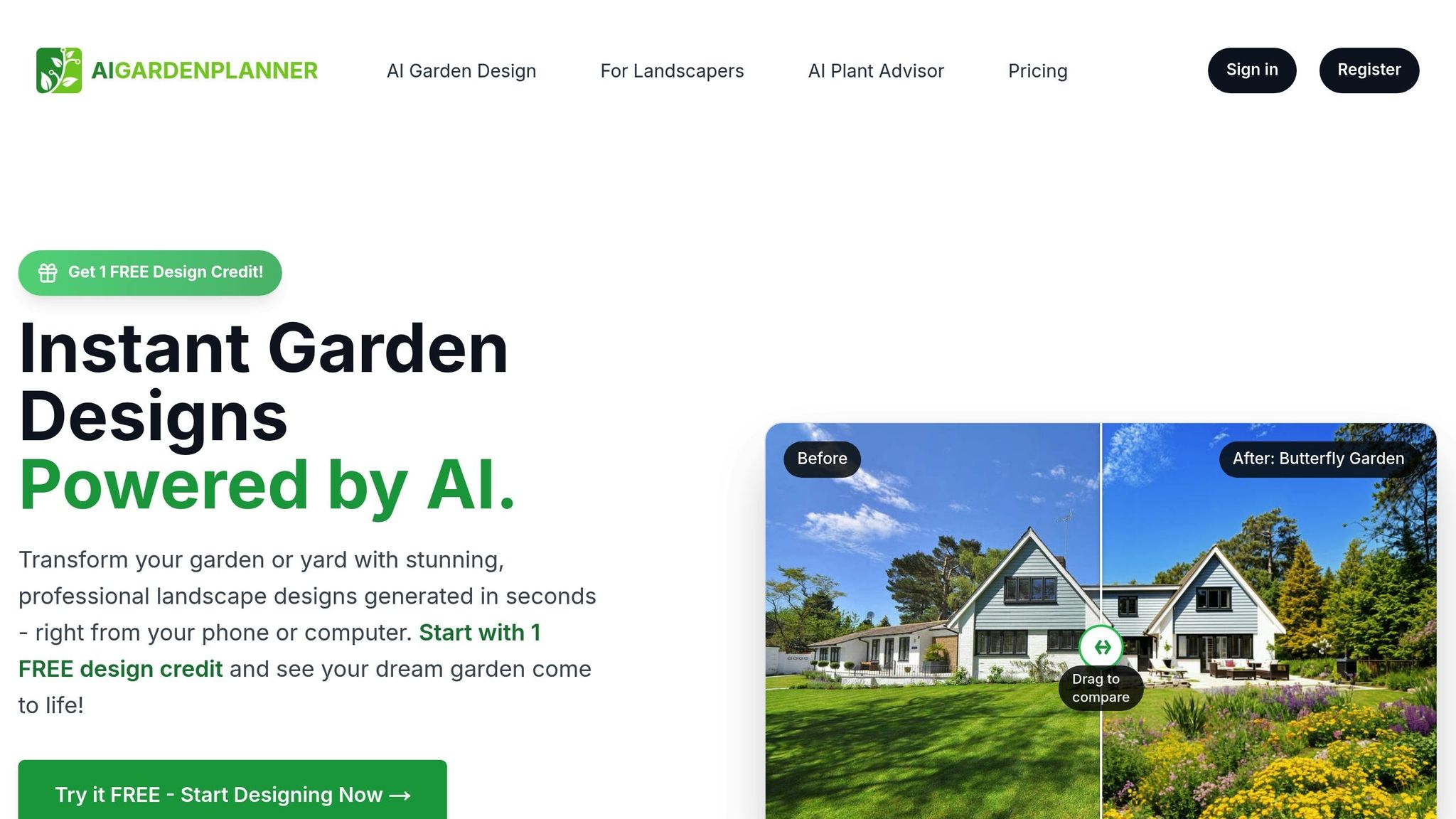
AIGardenPlanner takes the guesswork out of understanding your garden's unique conditions. By simply uploading photos of your garden, the platform can instantly identify distinct microclimate zones. It analyzes key factors like shade patterns, sun exposure, and nearby structures to determine how these elements influence your garden's layout. What once took weeks of manual measurements can now be accomplished in minutes.
Beyond mapping zones, AIGardenPlanner provides personalized plant recommendations that consider your location, climate zone, and gardening preferences. For instance, if you’re in a sunny area like Phoenix, Arizona, the AI may suggest desert-friendly plants for a south-facing wall. Meanwhile, in a shaded garden in Portland, Oregon, it might recommend moisture-loving species that thrive in cooler, damp conditions.
With over 50 garden styles to choose from, you can visualize how different plants will look in your garden before making any decisions. The platform generates high-resolution designs that show exactly where each plant should go to make the most of your garden's natural conditions. You can even create custom layouts that match your personal style while staying aligned with your garden’s microclimate needs.
For ongoing care, the AI Plant Advisor provides tailored growing guides and maintenance schedules that reflect your local climate. These guides take into account temperature changes, rainfall patterns, and seasonal shifts, ensuring your plants get the care they need year-round. Whether you’re a hobbyist or a professional, these features make gardening more informed and efficient.
Benefits for Gardeners and Professionals
For home gardeners, AIGardenPlanner is a game-changer. Instead of relying on trial and error, you get precise, science-based recommendations from the start. This means less wasted time, fewer failed plants, and more confidence in your gardening decisions.
Professional landscapers also stand to gain. The platform’s commercial licensing and project management tools are tailored for businesses handling multiple clients. With Pro and Premium plans supporting up to 50 and 1,000 projects respectively, landscapers can efficiently manage large-scale operations. Plus, the ability to quickly produce professional-grade designs allows landscapers to impress clients with microclimate-optimized plans during initial consultations.
AIGardenPlanner is especially useful for tackling tricky microclimates. Whether it’s areas with complex shade patterns, slopes with uneven drainage, or urban settings impacted by heat islands, the platform’s AI can analyze these challenges with precision. This leads to smarter plant placement and better results.
Another standout feature is the platform’s location-specific recommendations. By factoring in regional climate patterns, gardeners in different parts of the country receive advice tailored to their unique conditions. For example, a shaded area in Miami might call for entirely different plants than a similar space in Seattle, ensuring that every suggestion is perfectly suited to the local environment.
Conclusion
Microclimate differences play a huge role in determining whether plants thrive or struggle, making thoughtful placement a must. A plant that flourishes in a sunny, sheltered spot might wither just a few feet away in a colder, shaded area. This highlights why generic gardening methods often miss the mark. By carefully mapping your garden's unique zones and choosing plants suited to each, you can boost your garden's success while cutting down on maintenance and replacement costs.
Modern tools make this process easier than ever. AI-powered platforms like AIGardenPlanner take the guesswork out of gardening by offering instant, science-based insights into your microclimates. Instead of spending weeks observing your garden, you can simply upload photos and get tailored recommendations based on your specific location and conditions. These tools analyze factors like sun exposure, shade patterns, and structural influences, providing plant suggestions for each unique zone. Whether you're managing urban heat islands, tricky slopes, or the shade from mature trees, this technology empowers both home gardeners and professionals to make smarter, data-driven decisions.
Creating a thriving garden isn’t about sticking to one-size-fits-all advice. It’s about understanding your garden’s unique conditions and using the right tools to work with them. By blending microclimate knowledge with cutting-edge technology, you can design a garden that doesn’t just survive but truly thrives in its environment.
FAQs
How can I identify microclimates in my garden without using AI tools?
To pinpoint microclimates in your garden, take time to observe how different areas react to daily and seasonal changes. Notice sunlight patterns - some spots might bask in full sun, while others remain shaded. Also, identify areas that are either sheltered from or exposed to wind. Keep an eye on soil moisture, as certain spots may dry out quickly while others hold onto water longer.
Consider how nearby structures, trees, or slopes affect temperature and airflow. These subtle variations can guide you in selecting the right plants for each unique part of your garden.
What are the most common mistakes gardeners make when ignoring microclimates when placing plants?
One common misstep gardeners often make is ignoring the specific conditions created by microclimates in their garden. Elements like temperature shifts, sunlight levels, soil drainage, and wind exposure can differ greatly, even across a small space. Overlooking these factors can result in problems such as waterlogged areas, plants struggling due to excessive shade or heat, or damage caused by strong winds.
For instance, placing a sun-loving plant in a shaded corner or planting frost-sensitive species in a spot prone to cold snaps can stunt their growth or even lead to their demise. By paying attention to your garden's unique microclimates and carefully choosing where to place your plants, you can set the stage for healthier, more vibrant growth.
How do windbreaks and layered plantings improve a garden's microclimate?
Windbreaks play a key role in shaping a garden’s microclimate by slowing down wind. This not only helps to slightly raise temperatures but also boosts humidity and reduces evaporation. The result? A more stable environment where plants are shielded from harsh weather and water loss is kept to a minimum.
Layered plantings take this a step further by introducing different levels of vegetation - trees, shrubs, and ground cover. This method encourages biodiversity, offers shade, and helps regulate soil temperature, all of which contribute to a more balanced and resilient garden ecosystem.
When combined, these strategies create a well-protected, thriving microclimate that promotes healthier plant growth and a more self-sustaining garden.
🎨 Visualize Your Dream Garden Today!
Transform any outdoor space into a professional landscape design in minutes. Just upload a photo, choose your style, and let our AI do the rest.
Start your garden transformation now →Related posts
Related Articles
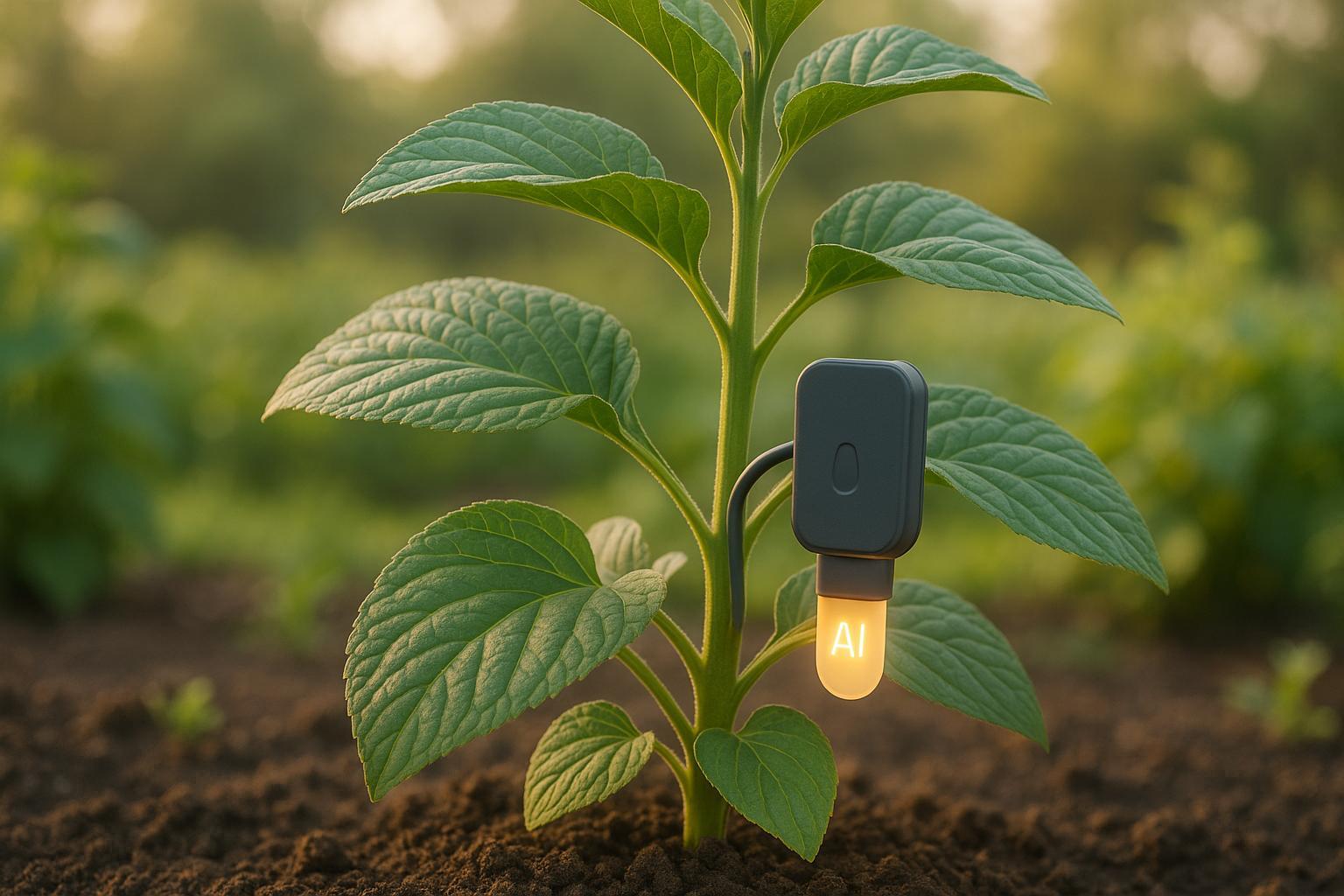
AI Sensors for Perennial Plant Stress Detection
Explore how AI sensors are revolutionizing perennial plant care by detecting stress early and optimizing water management for sustainable gardening.

How AI Predicts Soil Nutrient Depletion
AI technology predicts soil nutrient depletion, optimizing fertilization and enhancing plant health while saving time and resources.
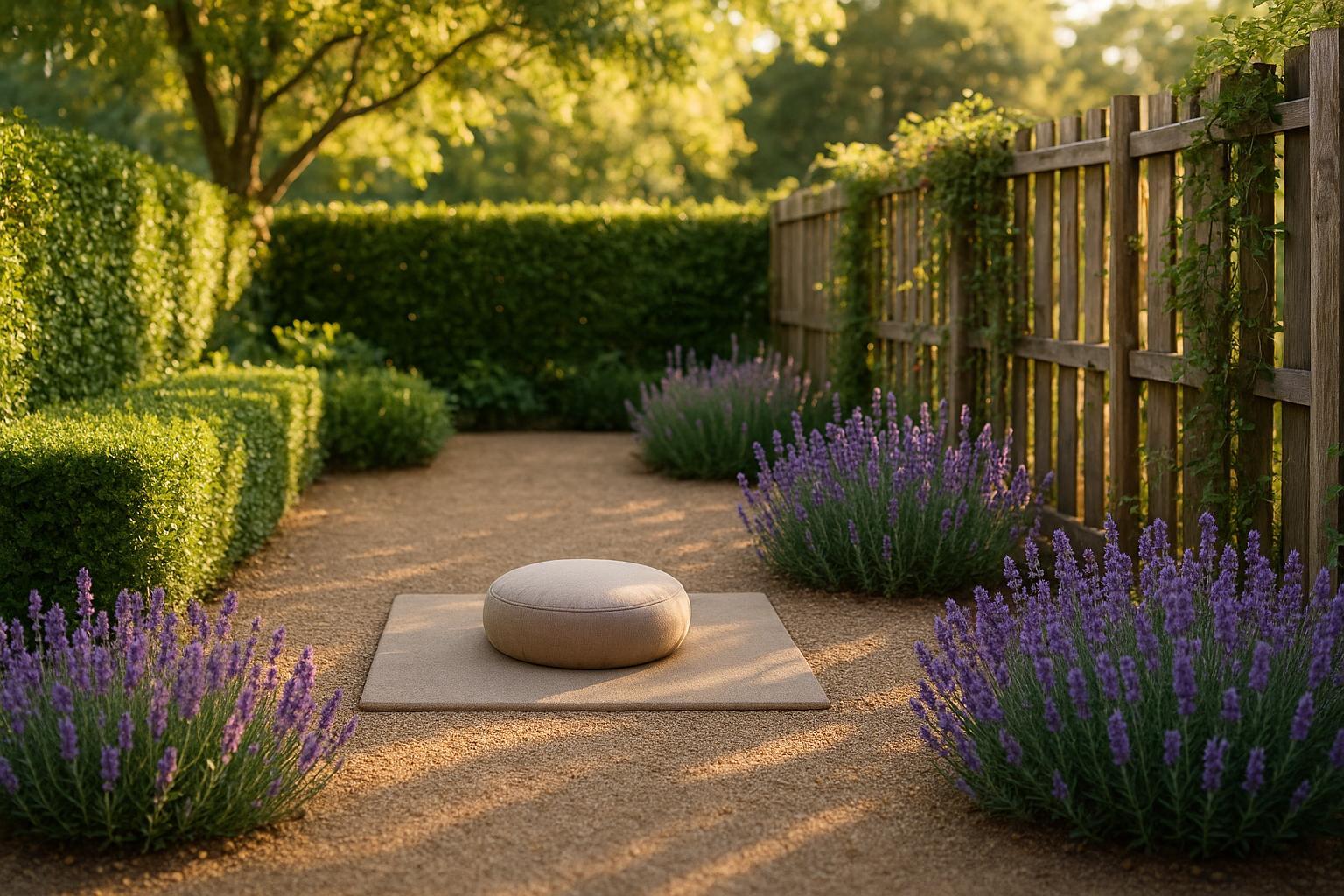
Ultimate Guide to Meditation Garden Boundaries
Explore how to create serene meditation garden boundaries with living and built elements for privacy, tranquility, and natural beauty.

Precision Irrigation with AI: How It Works
Explore how AI-driven precision irrigation optimizes water use, reduces costs, and enhances plant health through smart technology.
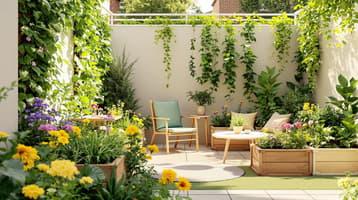
Small Garden Design: 10 Tips to Maximize Limited Space
Transform your small garden into a functional, inviting space with tips on vertical gardening, space-saving furniture, and strategic plant choices.
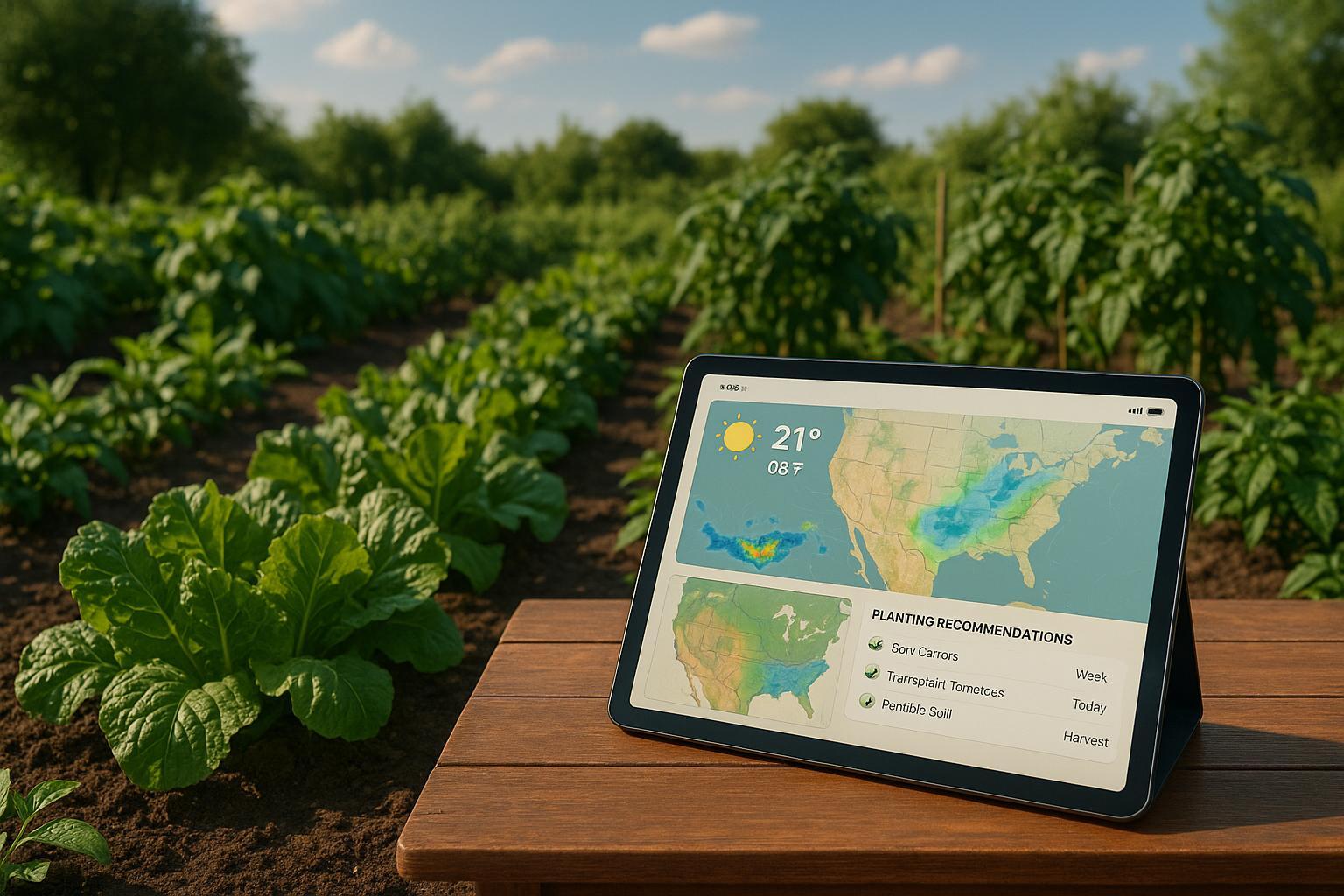
How AI Combines Climate Data for Planting
AI enhances gardening by analyzing climate data to provide tailored planting advice, optimize resources, and improve plant health.